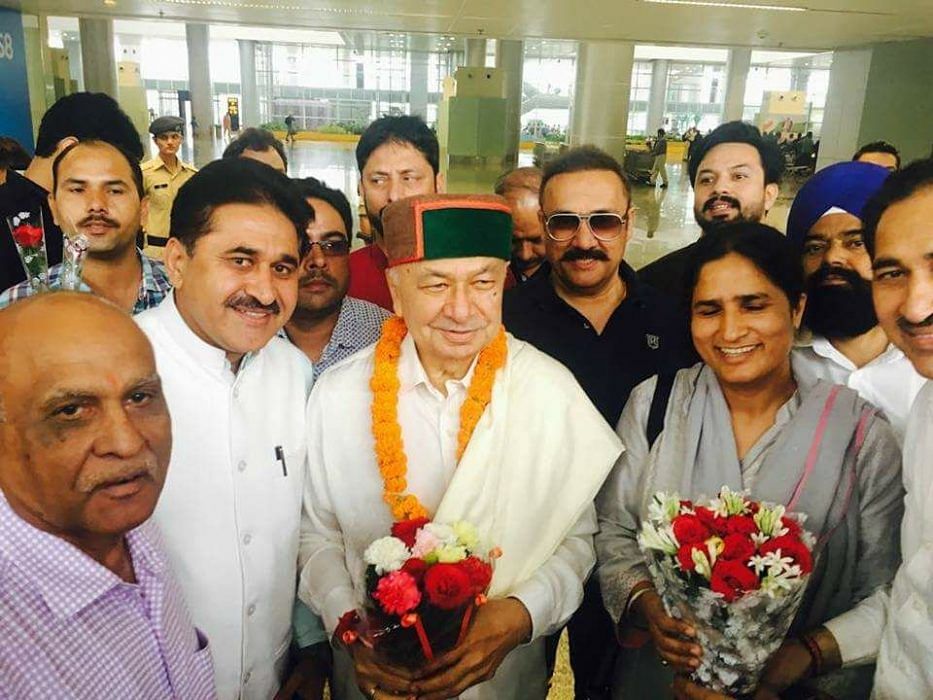The Sushil Kumar Shinde-headed home ministry had told the court that thinkers and ideologues had kept the Maoist movement alive in India.
New Delhi: In a 2013 affidavit, the Congress-led UPA government had informed the Supreme Court that one of the strategies used by the Maoists was to “mobilise certain targeted sections of the population, especially the urban population, through its ‘mass organisations’ which are otherwise known as ‘front organisations’”. It had also stated that these were more dangerous than the guerrilla army.
The same Congress is now expressing outrage over the arrest of five prominent human rights activists by the Maharashtra Police.
The November 2013 affidavit, filed by the home ministry with Sushil Kumar Shinde at its helm, had stated the CPI (Maoists) party mobilised and used certain sections of society such as thinkers, NGOs and other human right defenders as “front organisations” to undermine and emasculate enforcement action by the security forces.
Also read: Urban Naxal is the new enemy & ‘Useful Idiot’ BJP needs for 2019
These thinkers and ideologues, who are today labelled “Urban Naxals”, attempted to “malign the state institutions through propaganda and disinformation to further the cause of their ‘revolution’,” the UPA government had said.
“In fact, it is these ideologues who have kept the Maoist movement alive and are in many ways more dangerous than the cadres of the ‘People’s Liberation Guerilla Army’,” it had said.
Systematic propaganda
“The ideologues and supporters of the CPI (Maoist) party in cities and towns have undertaken a concerted and systematic propaganda against the state to project the state in a poor light and also malign it through disinformation.
“These ‘mass organisations’ are generally manned by ideologues, who include academicians and activists, fully committed to the party line. Such organisations ostensibly pursue human rights related issues and are also adept at using the legal processes…
“However, initiating legal proceedings against them has often resulted in negative publicity for the enforcement agencies due to the effectiveness of the propaganda machinery of the CPI (Maoist) party.
“The Maoists have destroyed 1,936 development and infrastructure facilities, and kidnapped proactive and sincere district collectors to prevent development from reaching the marginalised sections of the society.”
Also read: ‘Urban Naxals’ is BJP’s sinister plot promoted by its Urban Idiots: Jignesh Mevani
The affidavit added that “since the year 2001, the Maoists have killed 5,969 civilians, often branding them as police informers, class enemies, etc. An overwhelming majority of such people killed are poor adivasis whose cause the Maoists and their supporters profess to espouse”.
Most of the victims, the affidavit stated, were ‘tried’ by the Maoist leaders in sham kangaroo courts called ‘Jan Adalats’ before being beheaded. The UPA government said these facts were brushed away and not highlighted by the media due to the propaganda disseminated in various forums by the Maoist supporters that they are the champions of adivasi rights, a claim contrary to their actions.
“During the same period, the Maoists have also killed 2,147 security force personnel and looted 3,567 firearms from them.”
The case
The affidavit was filed on the heels of a plea filed by former Samajwadi Party legislator Kishor Samrite, who sought the effective implementation of the integrated action plan chalked out in 2009 to tackle menace of the Naxals. Samrite had further brought the court’s notice to the conflicting position of ministries of rural development and home that affected the plan’s implementation.
Also read: For Left-liberals, winning hashtag battles with #MeTooUrbanNaxal seems to be enough
The plea, filed in 2013, was disposed off four years later by a bench of then-Chief Justice of India J.S. Khehar and Justice D.Y. Chandrachud. According to the record of proceedings available on the Supreme Court website, the matter, which was listed in 2013, was heard just four times before it was disposed off in 2017.
“Having perused the pleadings of the case, we are satisfied, that the government is alive to the situation and keeping the concerned sensitivity in mind, it is taking appropriate action in the matter,” the bench had said.
